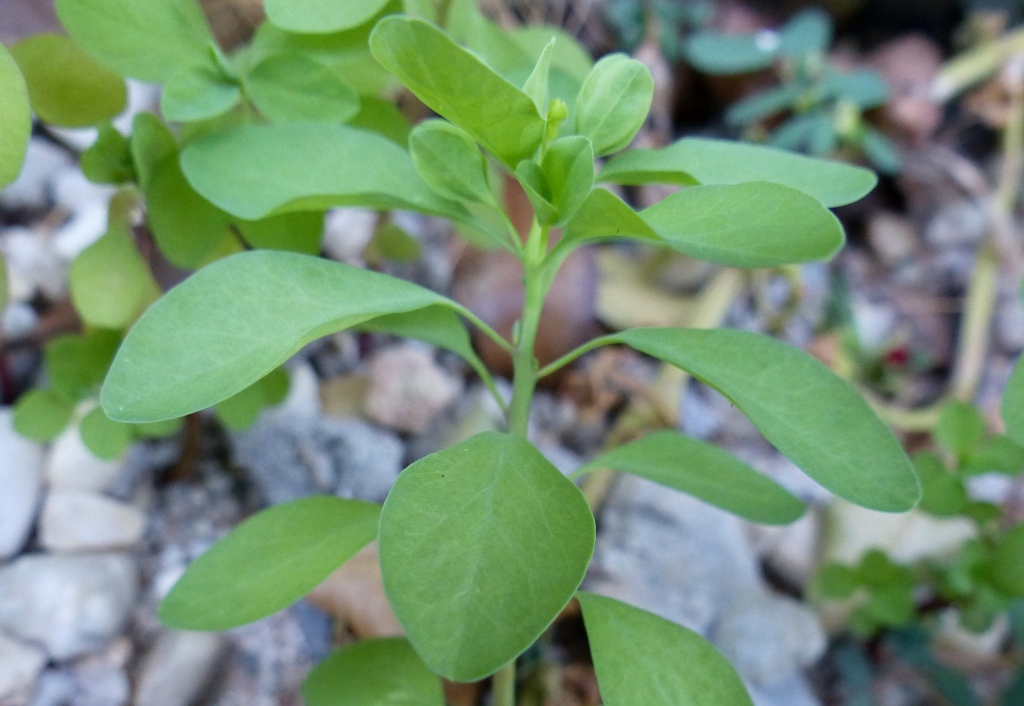Euphorbia peplus
L. Petty SpurgeErect or ascending annual herb 5–40 cm high, glabrous; stems usually branched from base, each with usually 3 terminal fertile branches which are further branched and forked, often turning reddish as they mature. Cauline leaves alternate, suborbicular, ovate or obovate, 5–25 mm long, 3–16 mm wide, apex obtuse, base cuneate, margins entire; petioles to c. 8 mm long; leaves on fertile branches opposite, ovate or triangular to rhombic, 3–15 mm long, 3–15 mm wide, shortly petiolate. Cyathia solitary in uppermost axils or terminal; peduncles to c. 1 mm long; involucre conical, c. 1 mm long; glands lunate, to c. 0.5 mm long, with 2 filiform white horn-like appendages; female flowers with styles divided into 2 arms, each with a capitate stigma. Capsule subglobose, c. 2 mm diam., keeled, smooth; seeds more or less ovoid, 1–1.5 mm long, furrowed and pitted, white or reddish, caruncle cap-like, fleshy, yellow. Flowers mainly Aug.–Dec. (but throughout the year).
LoM, MuM, Wim, GleP, Brid, VVP, VRiv, RobP, MuF, GipP, OtP, WaP, Gold, CVU, GGr, DunT, NIS, EGL, EGU, WPro, HSF, HNF, OtR, Strz, VAlp. Also naturalised all States. Native to Europe. A widespread weed of moist disturbed areas, spreading from gardens and cultivation.
Jeanes, J.A. (1999). Euphorbiaceae. In: Walsh, N.G.; Entwisle, T.J., Flora of Victoria Vol. 4, Cornaceae to Asteraceae, pp. 55–82. Inkata Press, Melbourne.
 Spinning
Spinning




